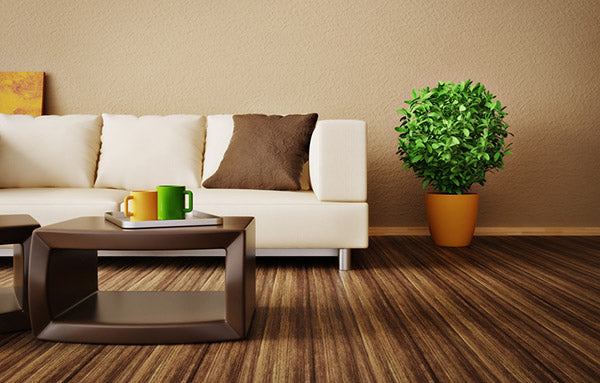Volatile organic compounds (VOCs) are a large group of carbon-based chemicals that easily evaporate at room temperature, forming a gas. You can smell some of them when there are high levels in the air, but their odour doesn't indicate the level of risk or harm from the VOC. VOCs come from lots of different things in our home: building materials, carpets and adhesives, composite wood products, paints, solvents, upholstery fabrics and foams, varnishes, vinyl floors, wallpapers, cleaners, personal care products, air fresheners and mothballs. You might create them when you're cooking, smoking, photocopying, or using a woodburner, and they can be produced in drycleaning and newspaper production.
Some common VOCs include:
You might not know that studies have indicated VOC levels indoors are between two and five times higher than outdoors. Take a look at this US examination of
VOC emissions from interior furnishings and building products:
Source: Black, M. S., W. J. Pearson and L. M. Work, 1991. A methodology for determining VOC emissions from new SBR latex-backed carpet. adhesives, cushions and installed systems and predicting their impact on indoor air quality, IAQ'9I: Healthy Buildings, ASHRAE, Washington, 1991,267-72.
How do I reduce the levels of VOCs in my home?
- If you've had your clothes drycleaned, unwrap them and air them out before you bring them inside.
- Smoking causes several air pollutants, so don't let others smoke in or near your home.
- Buy only as much paint, cleaners and solvents you need to use for the job at hand, so you don't have to store half full tins. If you do have paint left over, keep the lid on tight and try to store it in a room away from where you spend most of your time, or a shed outside the house. When it's time to get rid of the old tins, dispose of them safely instead of just throwing them in the household garbage. When you buy paint, check the level of VOCs per litre - you want the paint to be 150 grams of VOCs per litre or less. An even better option is to choose a non-VOC paint.
- Avoid mixing cleaners and solvents, because this can cause new pollutants.
- Consider buying solid wood furniture with finishes that emit low levels of VOCs.
- Unroll and ventilate new carpet before it's laid. When the carpet is being installed, and for a week or so afterwards, keep doors and windows open to air out the room.
- Think about buying a mattress made from natural materials and a bed made from untreated wood. And air your new bed and mattress out of their plastic covering, so they can off gas before you sleep on them.
- Wash new sheets before you use them and dry them outside. That's because polyester/cotton sheets might well have formaldehyde in them. If possible, choose sheets that are labelled as being free of formaldehyde.
- Managing your home's climate also helps control exposure to VOCs - try to bring in outside air and keep your house dry and cool.
- If a household chemical product tells you to use it in a well ventilated area, make sure you follow the instruction.
Look for certifications
Look for environmental benchmarks or ratings such as the Forest Stewardship Council's https://us.fsc.org/ sustainably treated timber mark or the Environmental Choice http://www.environmentalchoice.org.nz/ logo when buying products. There are healthy alternatives to every part of the building process, so before choosing any product, look for these logos or ask to see the material safety data sheet.
Read more

This rich banana pudding is incredibly satisfying. It's best served fresh from the oven on a chilly Winter's night, with a generous dollop of whipped cream and your favourite throw wrapped around y...

Ethanolamines are compounds of amino acids and alcohol that boost foam and are also used to stabilise a product's pH levels. They can be found in a wide array of every day products, including laund...







